Search Result
Results for "
dextran
" in MedChemExpress (MCE) Product Catalog:
37
Biochemical Assay Reagents
| Cat. No. |
Product Name |
Target |
Research Areas |
Chemical Structure |
-
- HY-112624
-
|
dextran 40
|
Bacterial
|
Cardiovascular Disease
Cancer
|
|
Dextran (Dextran 40) has an inhibitory effect on thrombocyte aggregation and coagulation factors and is used as a plasma volume expander.
|
-
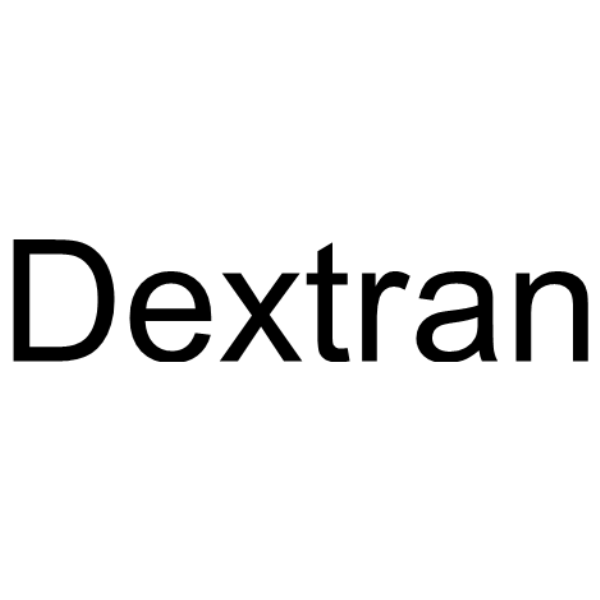
-
- HY-112624H
-
|
dextran 2; dextran D2; dextran T2(MW 1600-2400)
|
Biochemical Assay Reagents
|
Others
|
|
Dextran T2 MW 2000 (Dextran 2; Dextran D2; Dextran T2 MW 1600-2400) is a polymer of anhydroglucose with the average molecular weight of 2000. Dextran T2 MW 2000 exhibits good biodegradability and good biocompatibility, that is utilized in food, pharmaceutics, cosmetics, and research area .
|
-

-
- HY-112624A
-
|
dextran 1; dextran D1; dextran T1(MW 800-1200)
|
Biochemical Assay Reagents
|
Others
|
|
Dextran T1 MW 1,000 (Dextran 1; Dextran D1; Dextran T1 MW 800-1200) is a polymer of anhydroglucose with the average molecular weight of 1000. Dextran T1 MW 1,000 exhibits good biodegradability and good biocompatibility, that is utilized in food, pharmaceutics, cosmetics, and research area .
|
-

-
- HY-112624T
-
|
dextran 7; dextran D7; dextran T7(MW 5600-8400)
|
Biochemical Assay Reagents
|
Others
|
|
Dextran T7 MW 7,000 (Dextran 7; Dextran D7; Dextran T7 MW 5600-8400) is a polymer of anhydroglucose with the average molecular weight of 7000. Dextran T7 MW 7,000 exhibits good biodegradability and good biocompatibility, that is utilized in food, pharmaceutics, cosmetics, and research area .
|
-

-
- HY-112624P
-
|
dextran 500; dextran D500; dextran T500(MW 440000-560000)
|
Biochemical Assay Reagents
|
Others
|
|
Dextran T500 MW 500,000 (Dextran 500; Dextran D500; Dextran T500 MW 440000-560000) is a polymer of anhydroglucose with the average molecular weight of 500,000. Dextran T500 MW 500,000 exhibits good biodegradability and good biocompatibility, that is utilized in food, pharmaceutics, cosmetics, and research area .
|
-

-
- HY-112624D
-
|
dextran 60; dextran D60; dextran T60(MW 54000-66000)
|
Biochemical Assay Reagents
|
Others
|
|
Dextran T60 MW 60,000 (Dextran 60; Dextran D60; Dextran T60 MW 54000-66000) is a polymer of anhydroglucose with the average molecular weight of 60,000. Dextran T60 MW 60,000 exhibits good biodegradability and good biocompatibility, that is utilized in food, pharmaceutics, cosmetics, and research area .
|
-

-
- HY-112624Q
-
|
dextran 800; dextran D800; dextran T800(MW 750000-850000)
|
Biochemical Assay Reagents
|
Others
|
|
Dextran T800 MW 800,000 (Dextran 800; Dextran D800; Dextran T800 MW 750000-850000) is a polymer of anhydroglucose with the average molecular weight of 800,000. Dextran T800 MW 800,000 exhibits good biodegradability and good biocompatibility, that is utilized in food, pharmaceutics, cosmetics, and research area .
|
-

-
- HY-112624U
-
|
dextran 20; dextran D20; dextran T20(MW 16000-24000)
|
Biochemical Assay Reagents
|
Others
|
|
Dextran T20 MW 20,000 (Dextran 20; Dextran D20; Dextran T20 MW 16000-24000) is a polymer of anhydroglucose with the average molecular weight of 20,000. Dextran T20 MW 20,000 exhibits good biodegradability and good biocompatibility, that is utilized in food, pharmaceutics, cosmetics, and research area .
|
-

-
- HY-112624N
-
|
dextran 200; dextran D200; dextran T200(MW 180000-220000)
|
Biochemical Assay Reagents
|
Others
|
|
Dextran T100 MW 100,000 (Dextran D100; Dextran T100 MW 90000-110000) is a polymer of anhydroglucose with the average molecular weight of 100000. Dextran T1 MW 100,000 exhibits good biodegradability and good biocompatibility, that is utilized in food, pharmaceutics, cosmetics, and research area .
|
-

-
- HY-112624O
-
|
dextran 100; dextran D100; dextran T100(MW 90000-110000)
|
Biochemical Assay Reagents
|
Others
|
|
Dextran T200 MW 200,000 (Dextran D200; Dextran T200 MW 180000-220000) is a polymer of anhydroglucose with the average molecular weight of 1000. Dextran T1 MW 1,000 exhibits good biodegradability and good biocompatibility, that is utilized in food, pharmaceutics, cosmetics, and research area .
|
-

-
- HY-112624I
-
|
dextran 3; dextran D3; dextran T3(MW 2400-3600)
|
Biochemical Assay Reagents
|
Others
|
|
Dextran T3 MW 3,000 (Dextran D3; Dextran T3 MW 2400-3600) is a polymer of anhydroglucose with the average molecular weight of 3000. Dextran T3 MW 3,000 exhibits good biodegradability and good biocompatibility, that is utilized in food, pharmaceutics, cosmetics, and research area .
|
-

-
- HY-112624J
-
|
dextran 4; dextran D4; dextran T4(MW 3200-4800)
|
Biochemical Assay Reagents
|
Others
|
|
Dextran T4 MW 4,000 (Dextran D4; Dextran T4 MW 3200-4800) is a polymer of anhydroglucose with the average molecular weight of 4000. Dextran T4 MW 4,000 exhibits good biodegradability and good biocompatibility, that is utilized in food, pharmaceutics, cosmetics, and research area .
|
-

-
- HY-112624K
-
|
dextran 5; dextran D5; dextran T5(MW 4500-5500)
|
Biochemical Assay Reagents
|
Others
|
|
Dextran T5 MW 5,000 (Dextran D5; Dextran T5 MW 4500-5500) is a polymer of anhydroglucose with the average molecular weight of 5000. Dextran T5 MW 5,000 exhibits good biodegradability and good biocompatibility, that is utilized in food, pharmaceutics, cosmetics, and research area .
|
-

-
- HY-112624L
-
|
dextran 10; dextran D10; dextran T10(MW 8000-12000)
|
Biochemical Assay Reagents
|
Others
|
|
Dextran T10 MW 10,000 (Dextran D10; Dextran T10 MW 8000-12000) is a polymer of anhydroglucose with the average molecular weight of 10000. Dextran T10 MW 10,000 exhibits good biodegradability and good biocompatibility, that is utilized in food, pharmaceutics, cosmetics, and research area .
|
-

-
- HY-112624M
-
|
dextran 150; dextran D150; dextran T150(MW 130000-170000)
|
Biochemical Assay Reagents
|
Others
|
|
Dextran T150 MW 150,000 (Dextran D150; Dextran T150 MW 130000-170000) is a polymer of anhydroglucose with the average molecular weight of 150000. Dextran T150 MW 150,000 exhibits good biodegradability and good biocompatibility, that is utilized in food, pharmaceutics, cosmetics, and research area .
|
-

-
- HY-112624E
-
|
dextran 0.8; dextran D0.8; dextran T0.8(MW 640-960)
|
Biochemical Assay Reagents
|
Others
|
|
Dextran T0.8 MW 800 (Dextran 0.8; Dextran D0.8; Dextran T0.8 MW 640-960) is a polymer of anhydroglucose with average molecular weight of 800. Dextran T0.8 MW 800 exhibits good biodegradability and good biocompatibility, that is utilized in food, pharmaceutics, cosmetics, and research area .
|
-

-
- HY-112624B
-
|
dextran 70; dextran D70; dextran T70(MW 64000-76000)
|
Biochemical Assay Reagents
|
Others
|
|
Dextran T70 (MW 70,000) is a complex carbohydrate polymer consisting of glucose molecules linked by glycosidic bonds. Dextran has excellent solubility in water, making it useful as a viscosity modifier or stabilizer in foods, paints and adhesives. In the biomedical field, dextran is often used as a plasma expander because of its ability to increase blood volume when administered intravenously. It can also be modified to create dextran-based drug delivery systems, such as targeted nanoparticles.
|
-
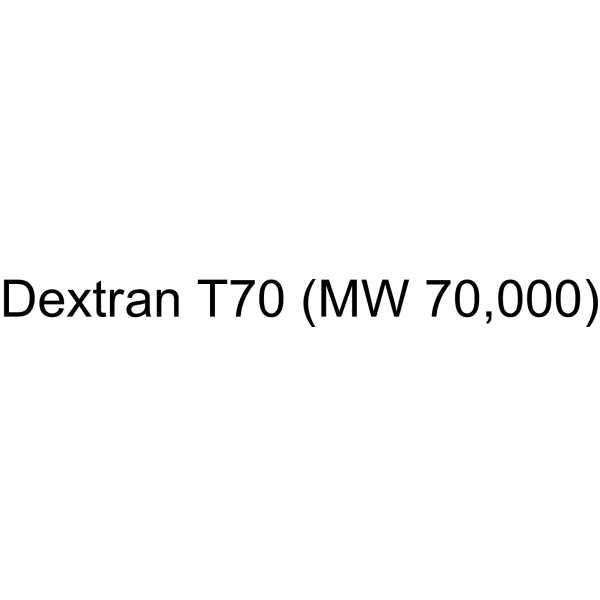
-
- HY-P2723
-
-
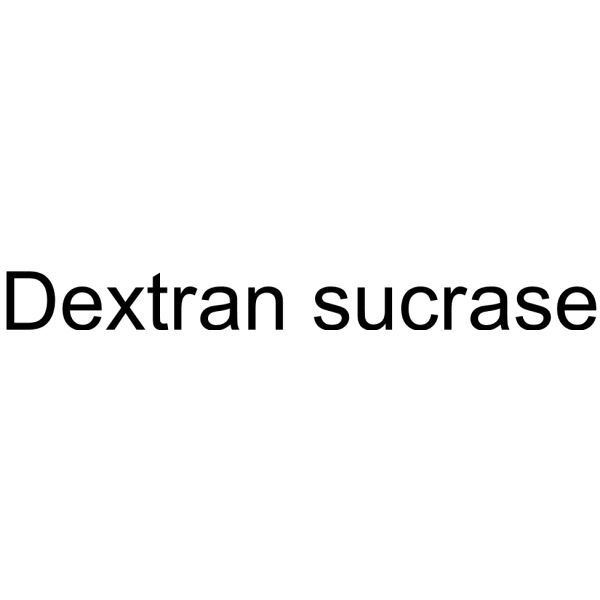
-
- HY-158227
-
|
DexMA
|
Biochemical Assay Reagents
|
Others
|
|
Dextran Methacryloyl (DexMA) is a methacryloyl dextran that converts into cell matrix gels. Dextran Methacryloyl formed gels that had no cytotoxic effects on fibroblasts, but cells adhered only inefficiently in long-term experiments .
|
-
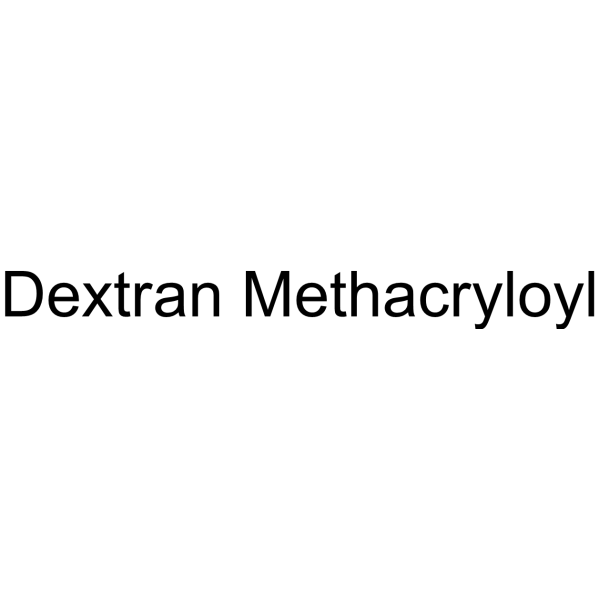
-
- HY-116282C
-
|
DSS (MW 35000-45000)
|
Apoptosis
HIV
|
Infection
Inflammation/Immunology
|
|
Dextran sulfate sodium salt (MW 35000-45000) is a polymer of anhydroglucose with the molecular weight range of 35000-45000. Dextran sulfate sodium salt can be used to induce colitis. Dextran sulfate sodium salt also can inhibit the replication of the human immunodeficiency virus by preventing the adsorption of the virus into host cells .
|
-
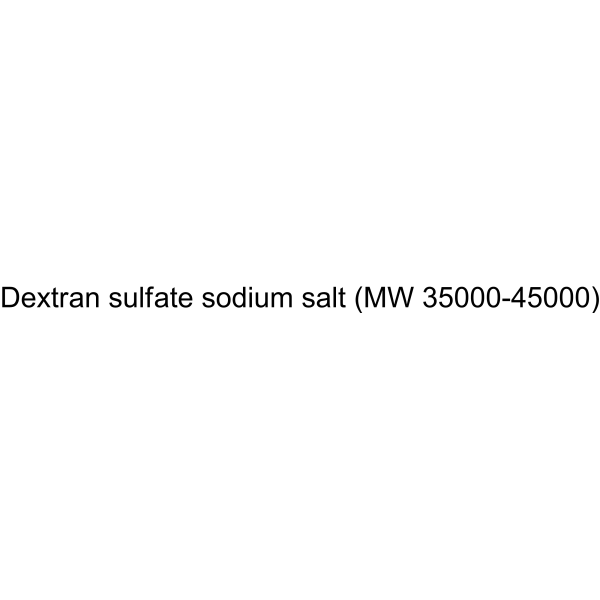
-
- HY-116282
-
-
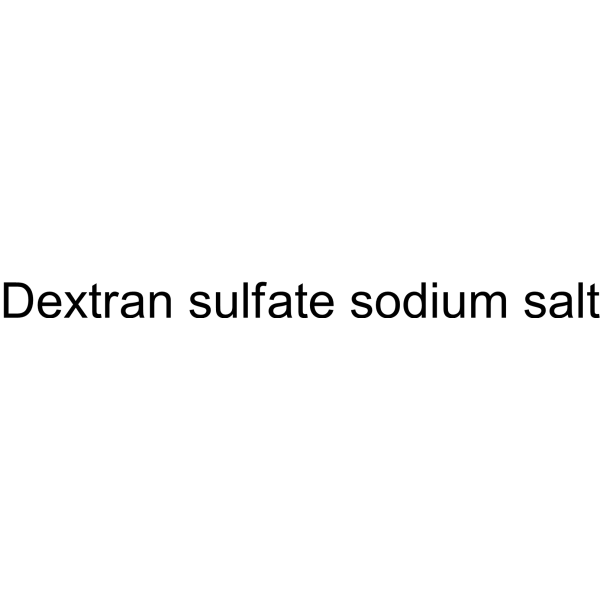
-
- HY-116282A
-
-
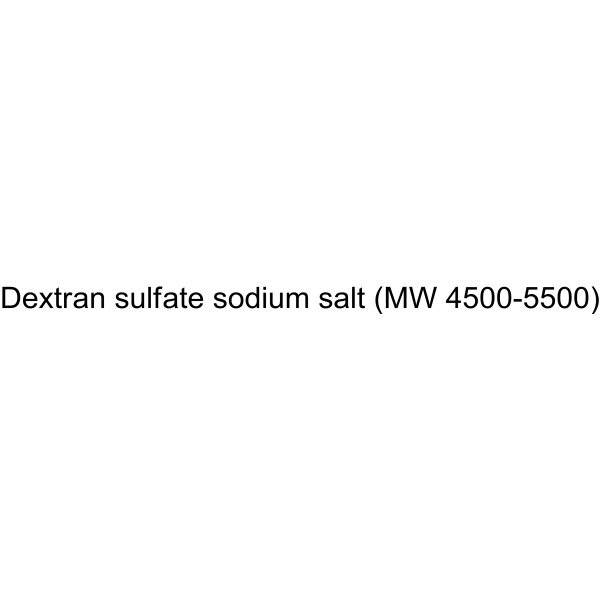
-
- HY-116282B
-
-

-
- HY-116282D
-
-
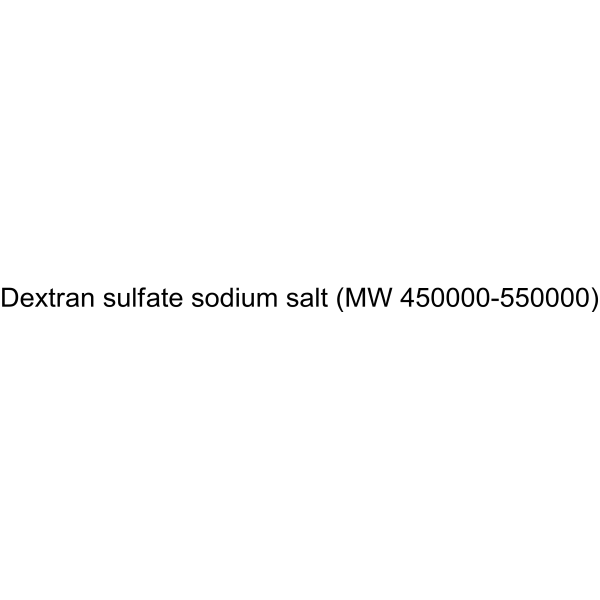
-
- HY-P2840
-
|
|
Endogenous Metabolite
|
Metabolic Disease
|
|
Dextranase, Trichoderma reesei, glucan hydrolase, is often used in biochemical research. Dextranase can catalyze the hydrolysis of α-(1,6)-glucosidic bonds in dextran, and has a wide range of applications, such as food processing, sugar modification, agent preparation, and medicine for enhancing the activity of endocarditis antibiotics wait .
|
-
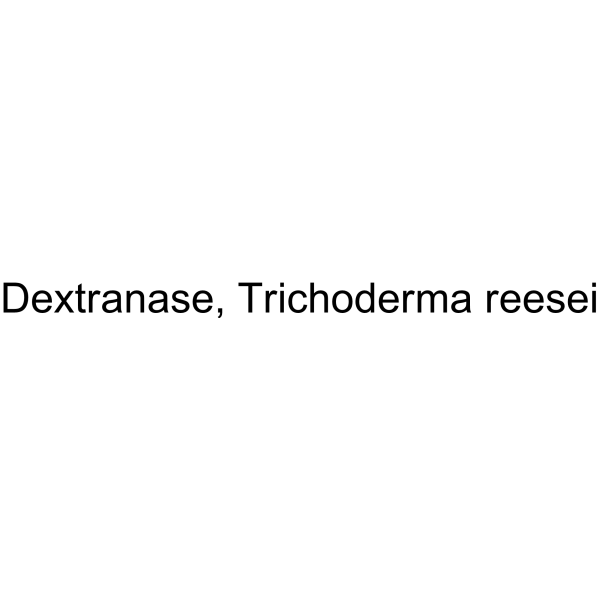
-
- HY-107928
-
-

-
- HY-128868G
-
|
|
Fluorescent Dye
|
Others
|
|
FITC-Dextran (MW 150000) is a fluorescent probe for fluorescein isothiocyanate (FITC) dextran (Ex=491 nm; Em=518 nm). FITC-Dextran (MW 150000) can be used as a marker to reveal heat shock-induced cell damage and to study the early and late stages of apoptosis. FITC-Dextran (MW 150000) can be used in perfusion studies in animals or in fluorescence microlymphography, to study processes that affect the permeability of the blood brain barrier (BBB) . FITC-Dextran (MW 150000) can be used as fluorescent probe to study cell permeability .
|
-

-
- HY-128868
-
|
|
Fluorescent Dye
|
Others
|
|
FITC-Dextran (MW 10000) is a fluorescent probe for fluorescein isothiocyanate (FITC) dextran (Ex=495 nm; Em=525 nm). FITC-Dextran (MW 10000) can be used as a marker to reveal heat shock-induced cell damage and to study the early and late stages of apoptosis. FITC-Dextran (MW 10000) can also be used for cell permeability studies, such as blood-brain barrier permeability and determination of the extent of blood-brain barrier disruption .
|
-

-
- HY-128868A
-
|
|
Fluorescent Dye
|
Others
|
|
FITC-Dextran (MW 4000) is a fluorescent probe for fluorescein isothiocyanate (FITC) dextran (Ex=495 nm; Em=525 nm). FITC-Dextran (MW 4000) can be used as a marker to reveal heat shock-induced cell damage and to study the early and late stages of apoptosis. FITC-Dextran (MW 4000) can also be used for cell permeability studies, such as blood-brain barrier permeability and determination of the extent of blood-brain barrier disruption .
|
-

-
- HY-128868D
-
|
|
Fluorescent Dye
|
Others
|
|
FITC-Dextran (MW 40000) is a fluorescent probe for fluorescein isothiocyanate (FITC) dextran (Ex=495 nm; Em=525 nm). FITC-Dextran (MW 40000) can be used as a marker to reveal heat shock-induced cell damage and to study the early and late stages of apoptosis. FITC-Dextran (MW 40000) can also be used for cell permeability studies, such as blood-brain barrier permeability and determination of the extent of blood-brain barrier disruption .
|
-

-
- HY-128868C
-
|
|
Biochemical Assay Reagents
|
Others
|
|
FITC-Dextran (MW 20000) is a compound belonging to the class of fluorescent dyes. It is commonly used in biomedical research as a tracer molecule to label and track cells or other biological matter. FITC-Dextran consists of fluorescein isothiocyanate (FITC) and dextran, a complex carbohydrate derived from starch. The combination of the two creates a stable fluorescent tracer that can be viewed under a microscope or quantified using specialized detection instruments.
|
-
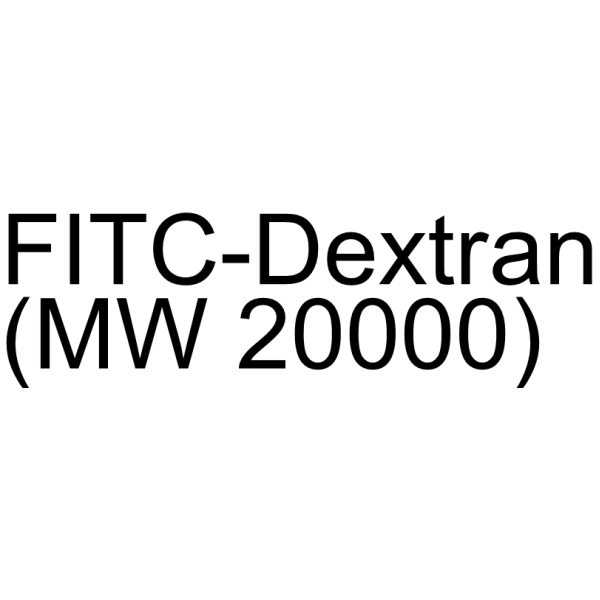
-
- HY-128868E
-
|
|
Biochemical Assay Reagents
|
Others
|
|
FITC-Dextran (MW 70000) is a compound belonging to the class of fluorescent dyes. It is commonly used in biomedical research as a tracer molecule to label and track cells or other biological matter. FITC-Dextran consists of fluorescein isothiocyanate (FITC) and dextran, a complex carbohydrate derived from starch. The combination of the two creates a stable fluorescent tracer that can be viewed under a microscope or quantified using specialized detection instruments.
|
-
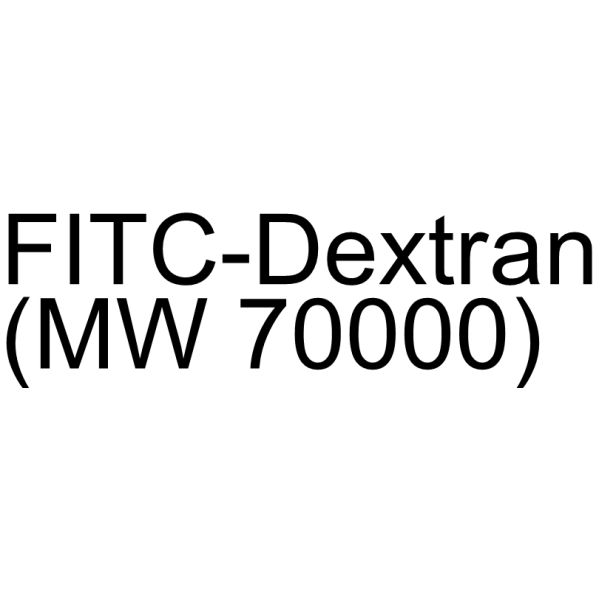
-
- HY-128868F
-
|
|
Biochemical Assay Reagents
|
Others
|
|
FITC-Dextran (MW 110000) is a compound belonging to the class of fluorescent dyes. It is commonly used in biomedical research as a tracer molecule to label and track cells or other biological matter. FITC-Dextran consists of fluorescein isothiocyanate (FITC) and dextran, a complex carbohydrate derived from starch. The combination of the two creates a stable fluorescent tracer that can be viewed under a microscope or quantified using specialized detection instruments.
|
-
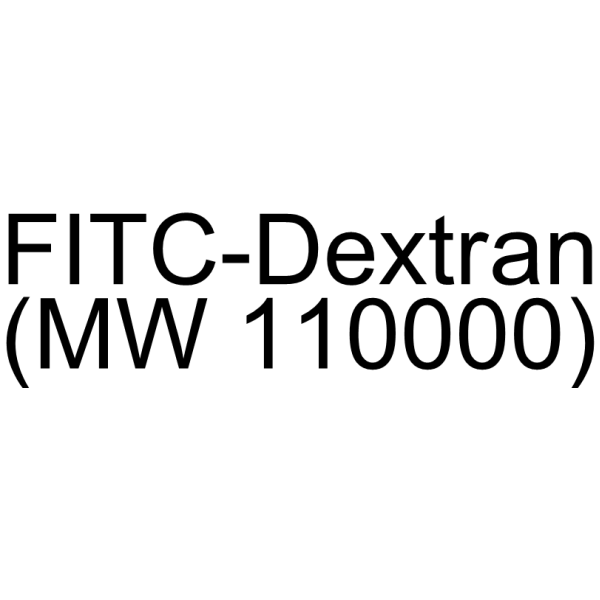
-
- HY-128868H
-
|
|
Biochemical Assay Reagents
|
Others
|
|
FITC-Dextran (MW 500000) is a compound belonging to the class of fluorescent dyes. It is commonly used in biomedical research as a tracer molecule to label and track cells or other biological matter. FITC-Dextran consists of fluorescein isothiocyanate (FITC) and dextran, a complex carbohydrate derived from starch. The combination of the two creates a stable fluorescent tracer that can be viewed under a microscope or quantified using specialized detection instruments.
|
-
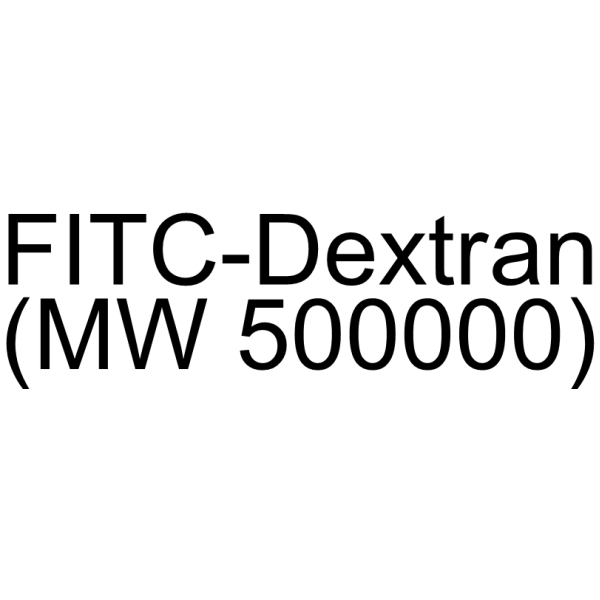
-
- HY-128868I
-
|
|
Biochemical Assay Reagents
|
Others
|
|
FITC-Dextran (MW 2000000) is a compound belonging to the class of fluorescent dyes. It is commonly used in biomedical research as a tracer molecule to label and track cells or other biological matter. FITC-Dextran consists of fluorescein isothiocyanate (FITC) and dextran, a complex carbohydrate derived from starch. The combination of the two creates a stable fluorescent tracer that can be viewed under a microscope or quantified using specialized detection instruments.
|
-

-
- HY-W134327
-
|
Diethylaminoethyl dextran (MW 40000)
|
Biochemical Assay Reagents
|
Others
|
|
DEAE-Dextran (MW 40000) is a biochemical reagent that can be used as a biological material or organic compound for life science related research.
|
-
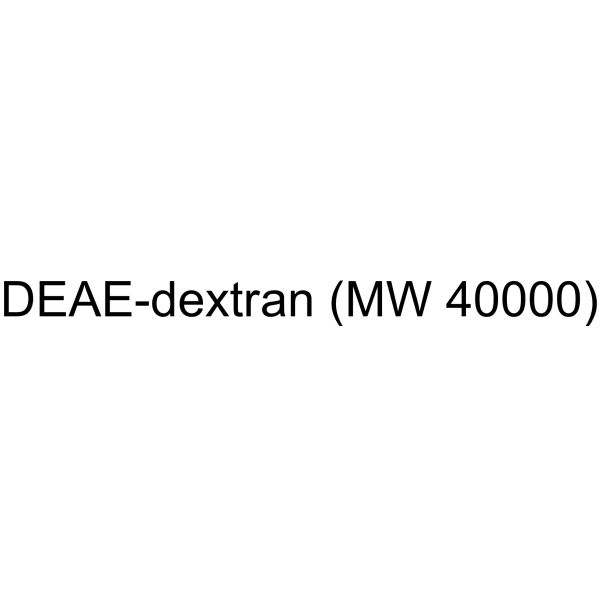
-
- HY-W134327A
-
|
Diethylaminoethyl dextran (MW 500000)
|
Biochemical Assay Reagents
|
Others
|
|
DEAE-Dextran (MW 500000) is a biochemical reagent that can be used as a biological material or organic compound for life science related research.
|
-

-
- HY-128868B
-
|
|
Biochemical Assay Reagents
|
Others
|
|
FITC-Dextran (MW 3000-5000) is a fluorescent probe for fluorescein isothiocyanate (FITC) dextran (Ex=495 nm; Em=525 nm). FITC-Dextran (MW 3000-5000) can be used as a marker to reveal heat shock-induced cell damage and to study the early and late stages of apoptosis. FITC-Dextran (MW 3000-5000) can also be used for cell permeability studies, such as blood-brain barrier permeability and determination of the extent of blood-brain barrier disruption . Storage: protect from light.
|
-
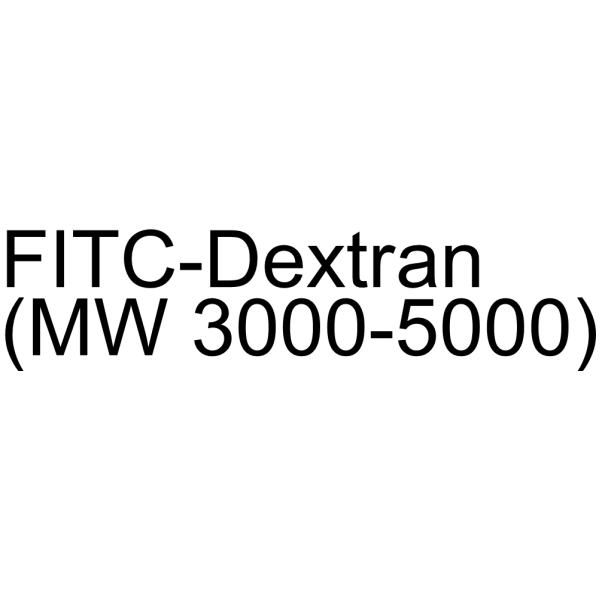
-
- HY-138560
-
|
|
Biochemical Assay Reagents
|
Others
|
|
Cross-linked dextran G 50 is a gel filtration medium. Cross-linked dextran G 50 can be used in gel permeation chromatography for fractionation of the glycopeptide mixture .
|
-
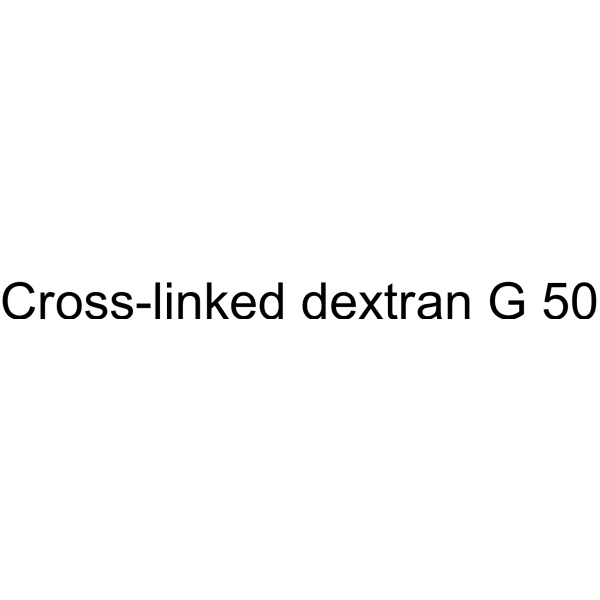
-
- HY-148140
-
|
|
Others
|
Others
|
|
Cross-linked dextran G 25 is a dextran chromatography medium. Sephadex G-25 separates from 1 to 5 kD (spherical proteins) and can be used for the separation of peptides as well as for the desalting and buffer replacement of large molecule proteins .
|
-
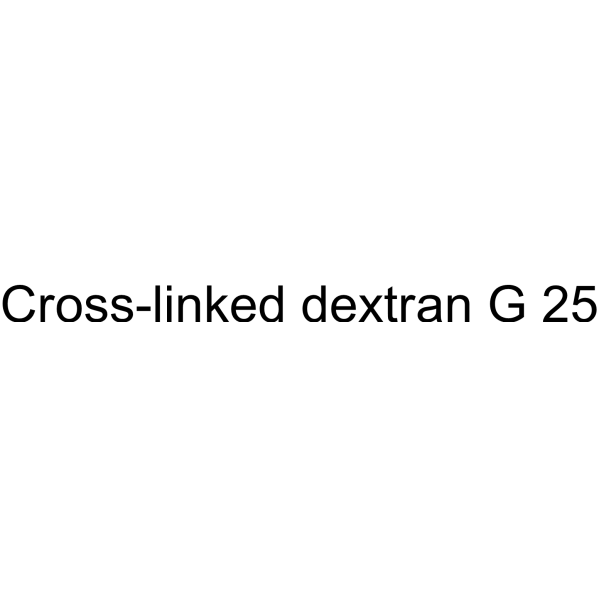
-
- HY-103703
-
|
|
Others
|
Others
|
|
DEAE Cross-linked dextran A 25 is a weak anion exchanger .
|
-
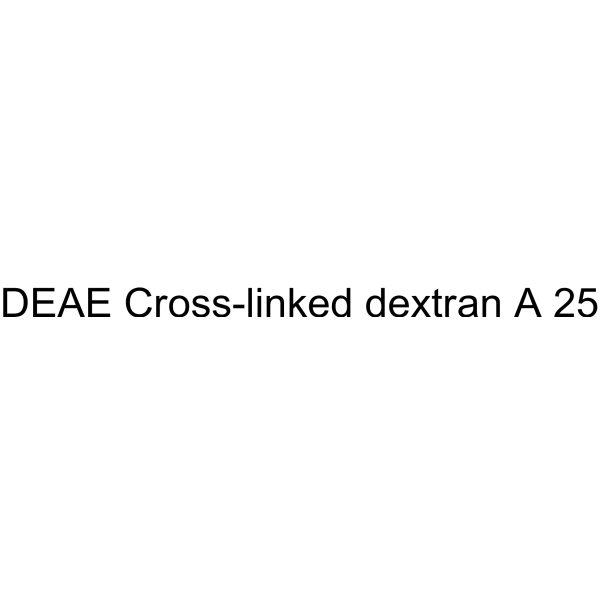
-
- HY-138638
-
|
|
Others
|
Others
|
|
Cross-linked dextran LH 20 could be used for the isolation and purification of natural compounds and foods, such as red wine, pigments, and flavonoids .
|
-
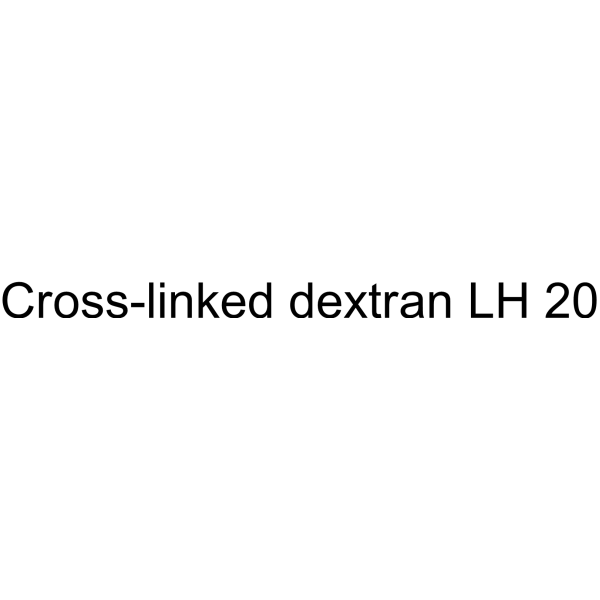
-
- HY-158082D
-
|
Tetramethyl rhodamine isothiocyanate glucan, MW 150000
|
Fluorescent Dye
|
Others
|
|
TRITC-dextran, MW 150000 (Tetramethyl rhodamine isothiocyanate glucan, MW 150000) is a fluorescent dye, with the molecular weight of 150 kD. TRITC-dextran, MW 150000 exhibits an excitation wavelength of 555 nm. TRITC-dextran, MW 150000 is follicular and vessel penetrate, which is dependent on the molecular weight. TRITC-dextran, MW 150000 is utilized in drug delivery for the stability of TRITC over a wide pH range (i.e. pH 2–11) and resistance to photo-bleaching .
|
-
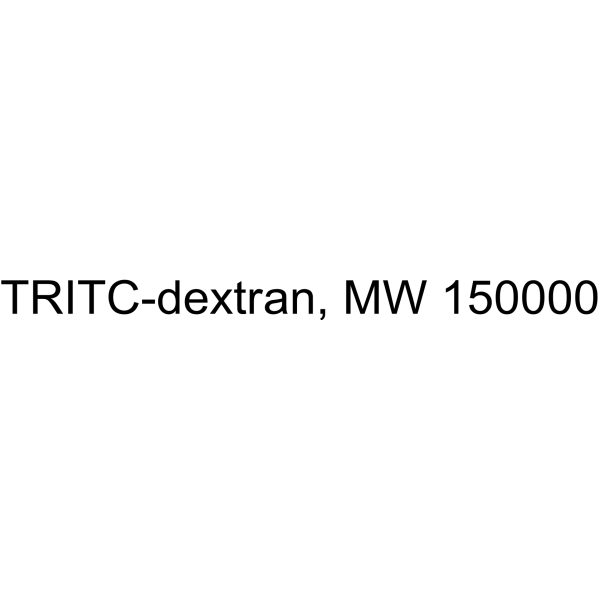
-
- HY-158082E
-
|
Tetramethyl rhodamine isothiocyanate glucan, MW 500000
|
Fluorescent Dye
|
Others
|
|
TRITC-dextran, MW 500000 (Tetramethyl rhodamine isothiocyanate glucan, MW 500000) is a fluorescent dye, with the molecular weight of 500 kD. TRITC-dextran, MW 500000 exhibits an excitation wavelength of 555 nm. TRITC-dextran, MW 500000 is follicular and vessel penetrate, which is dependent on the molecular weight. TRITC-dextran, MW 500000 is utilized in drug delivery for the stability of TRITC over a wide pH range (i.e. pH 2–11) and resistance to photo-bleaching .
|
-
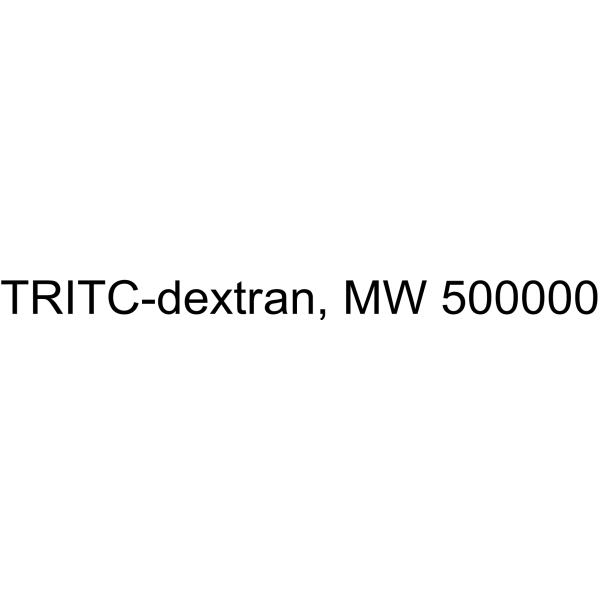
-
- HY-158082H
-
|
Tetramethyl rhodamine isothiocyanate glucan, MW 2000000
|
Fluorescent Dye
|
Others
|
|
TRITC-dextran, MW 2000000 (Tetramethyl rhodamine isothiocyanate glucan, MW 2000000) is a fluorescent dye, with the molecular weight of 2000 kD. TRITC-dextran, MW 2000000 exhibits an excitation wavelength of 555 nm. TRITC-dextran, MW 2000000 is follicular and vessel penetrate, which is dependent on the molecular weight. TRITC-dextran, MW 2000000 is utilized in drug delivery for the stability of TRITC over a wide pH range (i.e. pH 2–11) and resistance to photo-bleaching .
|
-
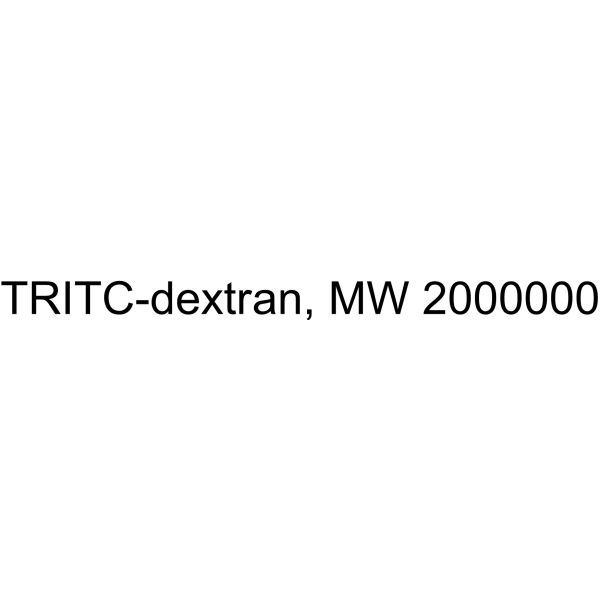
-
- HY-158082
-
|
Tetramethyl rhodamine isothiocyanate glucan, MW 4000
|
Fluorescent Dye
|
Others
|
|
TRITC-dextran MW 4000 (Tetramethyl rhodamine isothiocyanate glucan, MW 4000) is a fluorescent dye, with the molecular weight of 4 kD. TRITC-dextran MW 4000 exhibits an excitation wavelength of 555 nm. TRITC-dextran MW 4000 is vessel penetrate, which could label blood plasma to visualize the vasculature. TRITC-dextran MW 4000 is utilized in drug delivery for the stability of TRITC over a wide pH range (i.e. pH 2–11) and resistance to photo-bleaching .
|
-
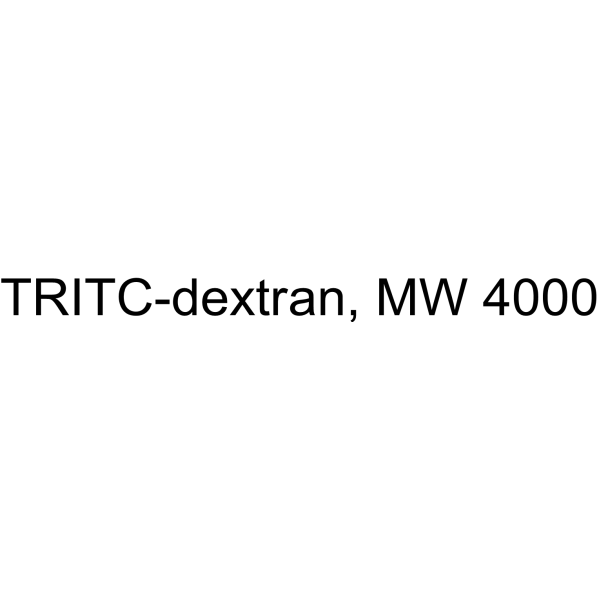
-
- HY-158082A
-
|
Tetramethyl rhodamine isothiocyanate glucan, MW 20000
|
Fluorescent Dye
|
Others
|
|
TRITC-dextran, MW 20000 (Tetramethyl rhodamine isothiocyanate glucan, MW 20000) is a fluorescent dye, with the molecular weight of 20 kD. TRITC-dextran MW 20000 exhibits an excitation wavelength of 555 nm. TRITC-dextran MW 20000 is vessel penetrate, which could label blood plasma to visualize the vasculature. TRITC-dextran MW 20000 is utilized in drug delivery for the stability of TRITC over a wide pH range (i.e. pH 2–11) and resistance to photo-bleaching .
|
-
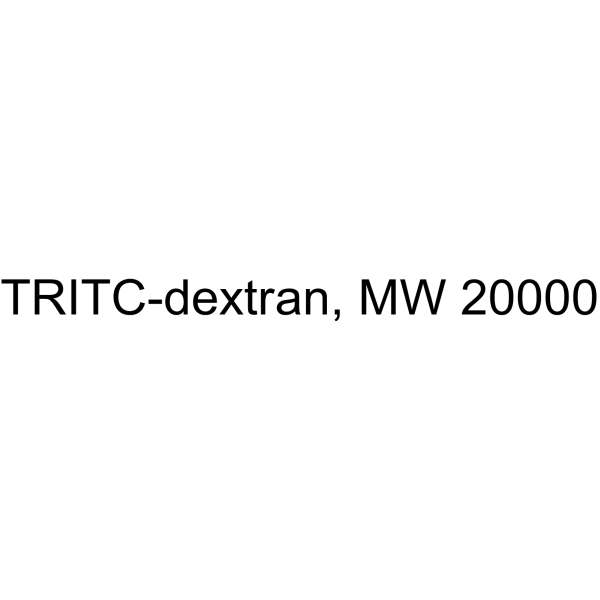
-
- HY-158082B
-
|
Tetramethyl rhodamine isothiocyanate glucan, MW 40000
|
Fluorescent Dye
|
Others
|
|
TRITC-dextran, MW 40000 (Tetramethyl rhodamine isothiocyanate glucan, MW 40000) is a fluorescent dye, with the molecular weight of 40 kD. TRITC-dextran MW 40000 exhibits an excitation wavelength of 555 nm. TRITC-dextran MW 40000 is vessel penetrate, which could label blood plasma to visualize the vasculature. TRITC-dextran MW 40000 is utilized in drug delivery for the stability of TRITC over a wide pH range (i.e. pH 2–11) and resistance to photo-bleaching .
|
-
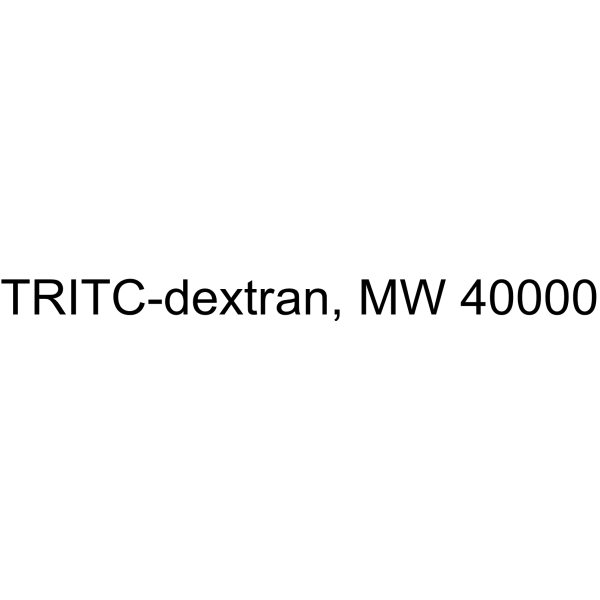
-
- HY-107928A
-
|
|
Biochemical Assay Reagents
|
Others
|
|
Iron–Dextran(Fe 25-35% w/w) is a biochemical reagent that can be used as a biological material or organic compound for life science related research.
|
-

-
- HY-107928B
-
|
|
Biochemical Assay Reagents
|
Others
|
|
Iron–Dextran(Fe 35-40% w/w) is a biochemical reagent that can be used as a biological material or organic compound for life science related research.
|
-

- HY-158082C
-
|
Tetramethyl rhodamine isothiocyanate glucan, MW 70000
|
Fluorescent Dye
|
Others
|
|
TRITC-dextran, MW 70000 (Tetramethyl rhodamine isothiocyanate glucan, MW 70000) is a fluorescent dye, with the molecular weight of 70 kD. TRITC-dextran, MW 70000 exhibits an excitation wavelength of 555 nm. TRITC-dextran, MW 70000 is utilized in drug delivery for the stability of TRITC over a wide pH range (i.e. pH 2–11) and resistance to photo-bleaching .
|
-
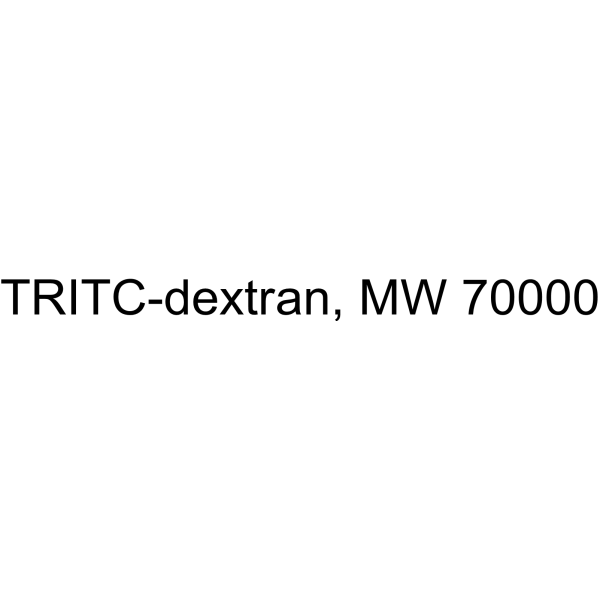
- HY-N1388
-
|
|
Others
|
Inflammation/Immunology
|
|
Tussilagone, a major active component in Tussilago farfara, has anti-inflammatory effect. Tussilagone ameliorates inflammatory responses in dextran sulphate sodium-induced murine colitis. Tussilagone inhibits the inflammatory response and improves survival in cecal ligation and puncture (CLP)-induced septic mice .
|
-

- HY-111662
-
|
|
NOD-like Receptor (NLR)
|
Inflammation/Immunology
|
|
Fc 11a-2, a benzimidazole compound, is an orally active and potent NLRP3 inflammasome inhibitor. Fc 11a-2 restrains the formation of NLRP3 inflammasome by inhibiting activation of caspase-1 and thus the activation of IL-1b/IL-18. Fc 11a-2 prevents the development of Dextran sulfate sodium (DSS; HY-116282C)-induced murine experimental colitis .
|
-

- HY-N0913A
-
|
|
Others
|
Others
|
|
Isomaltotriose is a sugar from enzymic hydrolyzates of the dextran from Leuconostoc mesenteroides NRRL B-512 .
|
-
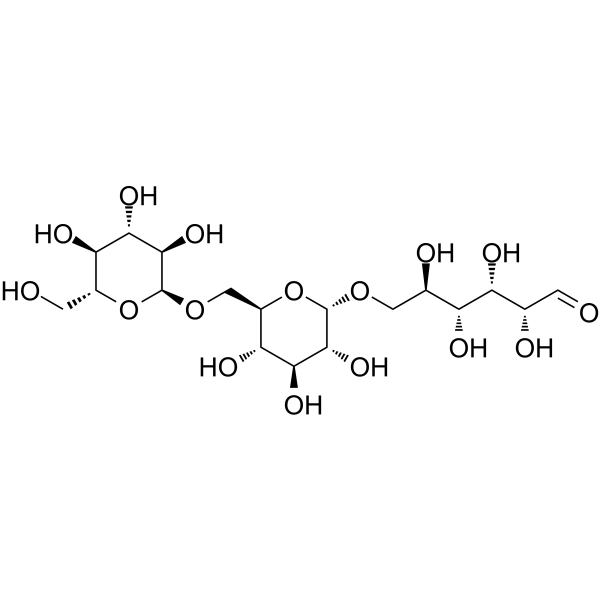
- HY-N0648
-
|
|
Others
|
Inflammation/Immunology
|
|
Monotropein is an iridoid glycoside isolated Morinda officinalis. Monotropein inhibits the expression of inflammatory mediators in dextran sulfate sodium (DSS)-induced colitis mouse model .
|
-
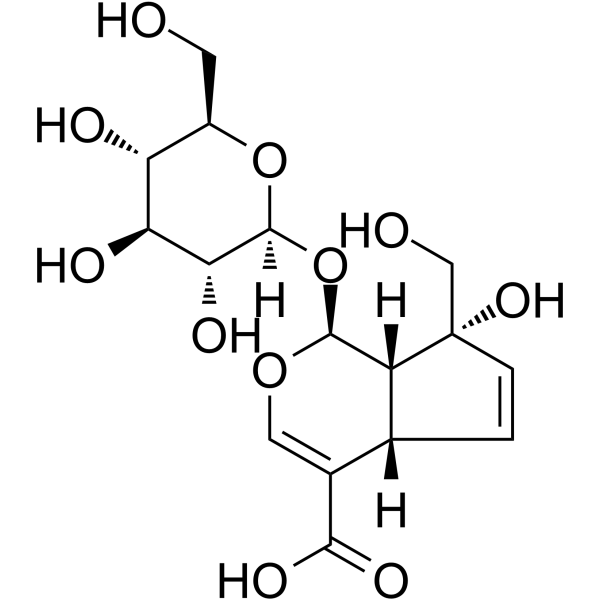
- HY-N2478
-
|
|
Others
|
Inflammation/Immunology
|
|
Taraxasteryl acetate is isolated from P. sagittalis,and has a broad spectrum of anti-inflammatory activity. Taraxasteryl acetate relieves dextran, zymosan and arachidonic acid induced rat hind-paw edema. Taraxasteryl acetate can be used for the topical inflammation treatment [1] .
|
-
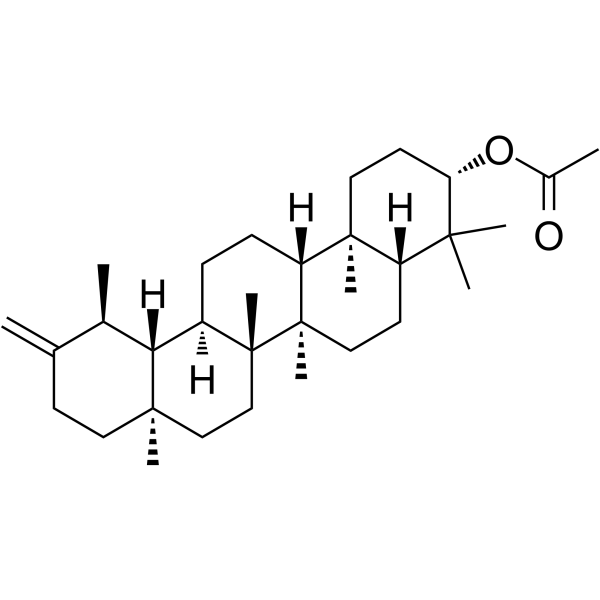
- HY-118704
-
|
|
mTOR
|
Inflammation/Immunology
Cancer
|
|
P-2281 is a mTOR inhibitor with anticancer and anti-inflammatory efficacies. P-2281 suppresses dextran sulfate sodium (DSS)-induced colitis by inhibiting T cell function and is efficacious in a murine model of human colitis .
|
-
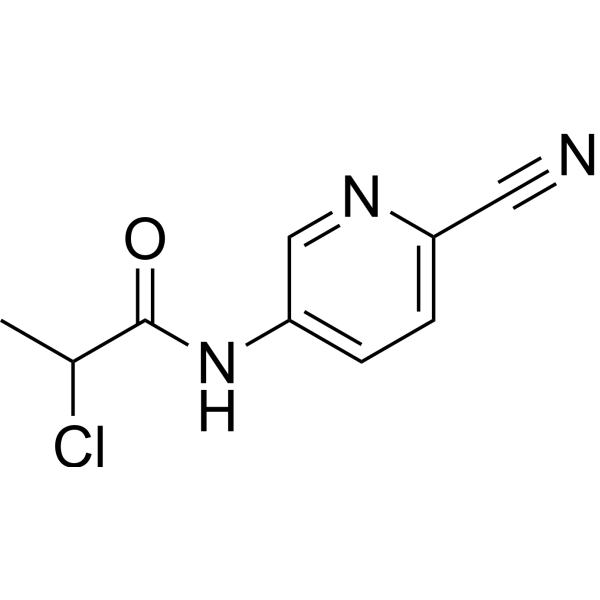
- HY-108622
-
-
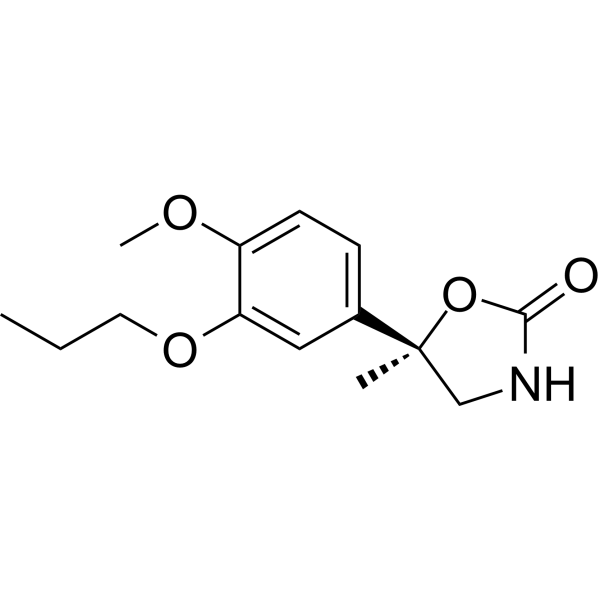
- HY-N0278
-
|
Pulsatilla camphor; Anemonine; trans-Anemonin
|
PKC
NO Synthase
|
Inflammation/Immunology
|
|
Anemonin (Pulsatilla camphor), a selective iNOS inhibitor, is also a PKC-θ inhibitor. Anemonin can significantly inhibit the translation or protein stability of PKC-θ protein. Anemonin also ameliorates dextran sodium sulfate-induced acute ulcerative colitis (UC) in mice. Anemonin can be used in the research of inflammation-related diseases .
|
-
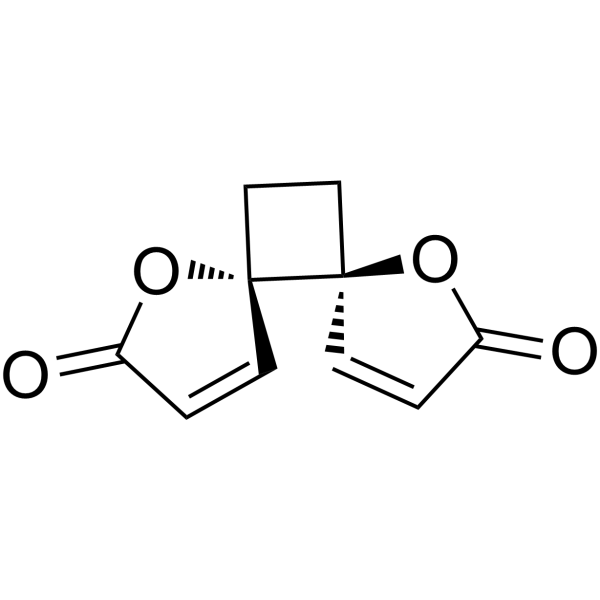
- HY-150612
-
|
|
p38 MAPK
|
Cancer
|
|
(R)-STU104 is a potent and orally active TAK1-MKK3 interaction inhibitor with IC50s of 0.58 μM and 4.0 μM for TNF-α and MKK3 phosphorylation. (R)-STU104 suppresses the TAK1/MKK3/p38/MnK1/MK2/elF4E signal pathways through binding with MKK3 and disrupting the TAK1 phosphorylating MKK3. (R)-STU104 can be used for researching ulcerative colitis .
|
-
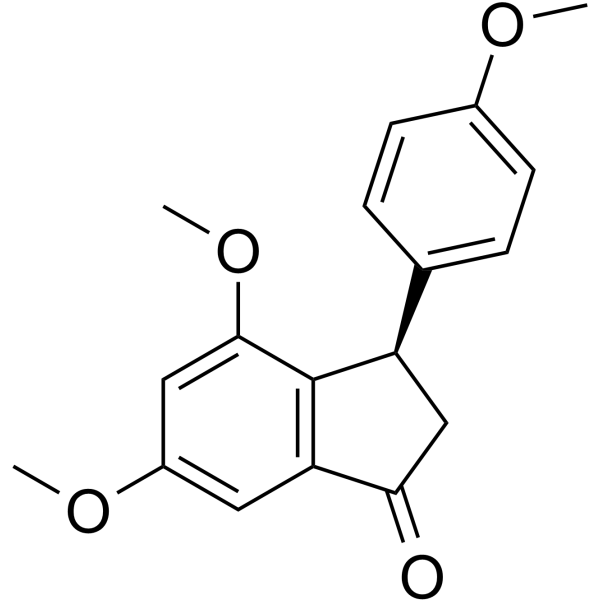
- HY-151252
-
|
|
Proteasome
NOD-like Receptor (NLR)
|
Inflammation/Immunology
|
|
NIC-0102 is an orally active proteasome inhibitor (pIC50=7.55) that specifically inhibits NLRP3 inflammatory vesicle activation. NIC-0102 shows potent anti-inflammatory effects in a model of dextran sulfate sodium (DSS)-induced ulcerative colitis. NIC-0102 also inhibits production of pro-IL-1β .
|
-
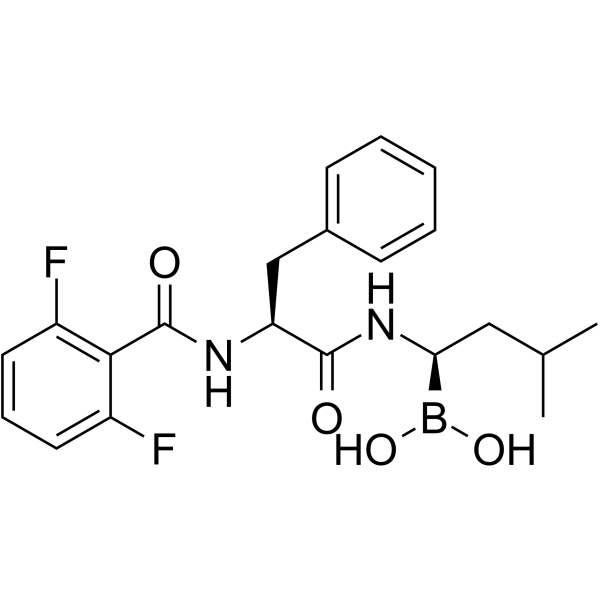
- HY-120912
-
|
|
Keap1-Nrf2
Glutathione Peroxidase
|
Inflammation/Immunology
|
|
Gingerenone A is a Nrf2-Gpx4 activator with anti-breast-cancer properties. Gingerenone A results a delayed G2/M in cancer cells, following oxidative stress and senescence responses. Gingerenone A also alleviates ferroptosis in secondary liver injury (SLI) in dextran sodium sulfate (DSS)-induced colitis mice. Gingerenone A can be isolated from Zingiber officinale .
|
-

- HY-N0278A
-
|
(Rac)-Pulsatilla camphor; (Rac)-Anemonine
|
PKC
NO Synthase
|
Inflammation/Immunology
|
|
(Rac)-Anemonin ((Rac)-Pulsatilla camphor) is the diastereoisomer of Anemonin (HY-N0278). Anemonin (Pulsatilla camphor), a selective iNOS inhibitor, is also a PKC-θ inhibitor. Anemonin can significantly inhibit the translation or protein stability of PKC-θ protein. Anemonin also ameliorates dextran sodium sulfate-induced acute ulcerative colitis (UC) in mice. Anemonin can be used in the research of inflammation-related diseases .
|
-
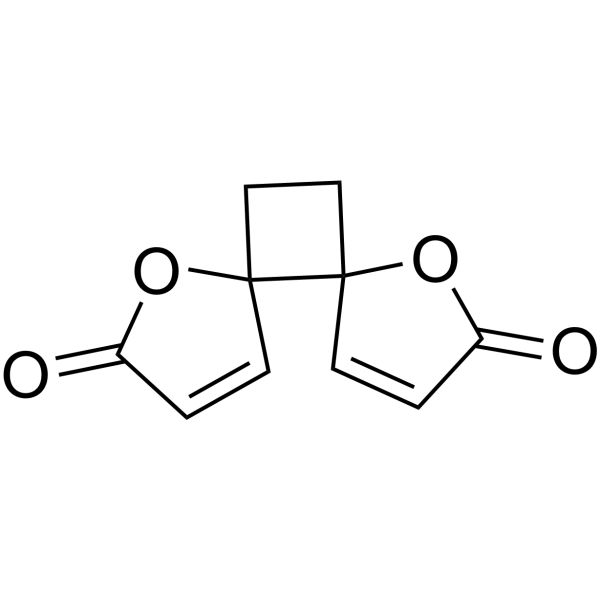
- HY-155199
-
|
|
Phosphodiesterase (PDE)
|
Inflammation/Immunology
|
|
PDE1-IN-5 (Compound 10c) is a selective PDE1C inhibitor (IC50: 15 nM). PDE1-IN-5 has anti- inflammatory activity, and inhibits expression of iNOS, TNF-α, IL-1α, IL-1β, and IL-6 induced by LPS. PDE1-IN-5 has anti-inflammatory bowel disease (IBD) effects in the dextran sodium sulfate (DSS)-Induced colitis mice model. PDE1-IN-5 can be used for research of IBD .
|
-
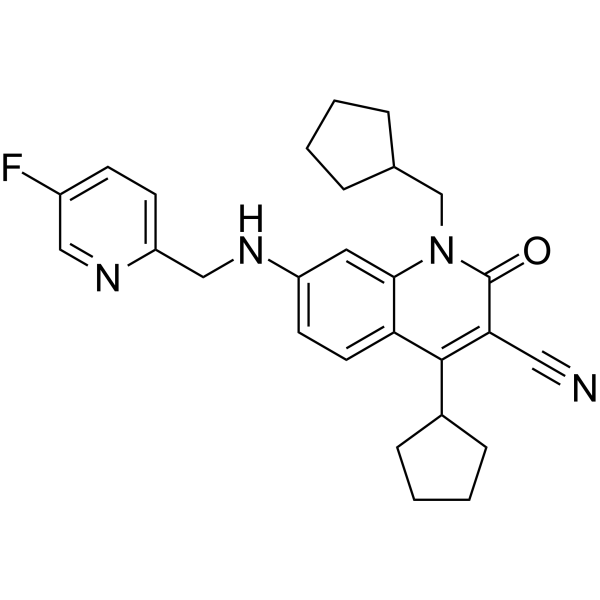
- HY-155998
-
|
|
NF-κB
|
Inflammation/Immunology
|
|
NF-κB-IN-11 (Compound 3i) is a NF-κB inhibitor. NF-κB-IN-11 inhibits TNF-α induced activation of NF-κB pathway, and inhibits nuclear translocation of NF-κB. NF-κB-IN-11 down-regulates the expression levels of phosphor-IKK, IκBα, and NF-κB p65. NF-κB-IN-11 has anti-inflammatory activity, and alleviates dextran sulfate sodium-induced colitis in mice. NF-κB-IN-11 (p.o.) shows a MTD more than 1852 mg/kg in mice acute toxicity assay .
|
-
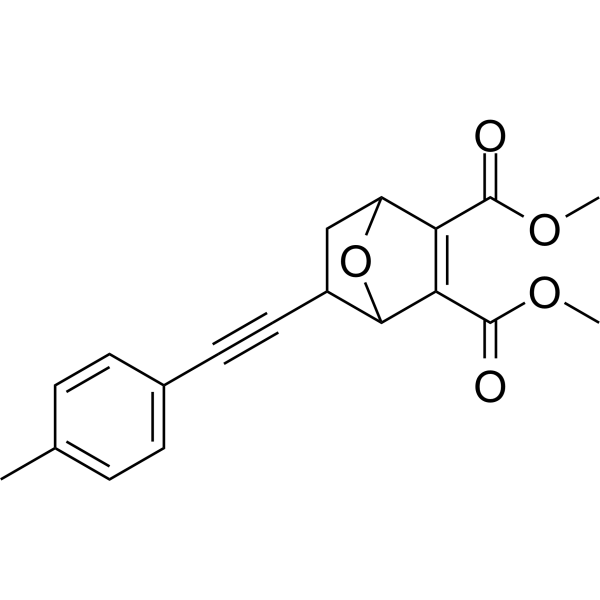
| Cat. No. |
Product Name |
Type |
-
- HY-128868G
-
|
|
Fluorescent Dyes/Probes
|
|
FITC-Dextran (MW 150000) is a fluorescent probe for fluorescein isothiocyanate (FITC) dextran (Ex=491 nm; Em=518 nm). FITC-Dextran (MW 150000) can be used as a marker to reveal heat shock-induced cell damage and to study the early and late stages of apoptosis. FITC-Dextran (MW 150000) can be used in perfusion studies in animals or in fluorescence microlymphography, to study processes that affect the permeability of the blood brain barrier (BBB) . FITC-Dextran (MW 150000) can be used as fluorescent probe to study cell permeability .
|
-
- HY-128868
-
|
|
Fluorescent Dyes/Probes
|
|
FITC-Dextran (MW 10000) is a fluorescent probe for fluorescein isothiocyanate (FITC) dextran (Ex=495 nm; Em=525 nm). FITC-Dextran (MW 10000) can be used as a marker to reveal heat shock-induced cell damage and to study the early and late stages of apoptosis. FITC-Dextran (MW 10000) can also be used for cell permeability studies, such as blood-brain barrier permeability and determination of the extent of blood-brain barrier disruption .
|
-
- HY-128868A
-
|
|
Fluorescent Dyes/Probes
|
|
FITC-Dextran (MW 4000) is a fluorescent probe for fluorescein isothiocyanate (FITC) dextran (Ex=495 nm; Em=525 nm). FITC-Dextran (MW 4000) can be used as a marker to reveal heat shock-induced cell damage and to study the early and late stages of apoptosis. FITC-Dextran (MW 4000) can also be used for cell permeability studies, such as blood-brain barrier permeability and determination of the extent of blood-brain barrier disruption .
|
-
- HY-128868D
-
|
|
Fluorescent Dyes/Probes
|
|
FITC-Dextran (MW 40000) is a fluorescent probe for fluorescein isothiocyanate (FITC) dextran (Ex=495 nm; Em=525 nm). FITC-Dextran (MW 40000) can be used as a marker to reveal heat shock-induced cell damage and to study the early and late stages of apoptosis. FITC-Dextran (MW 40000) can also be used for cell permeability studies, such as blood-brain barrier permeability and determination of the extent of blood-brain barrier disruption .
|
-
- HY-128868C
-
|
|
Dyes
|
|
FITC-Dextran (MW 20000) is a compound belonging to the class of fluorescent dyes. It is commonly used in biomedical research as a tracer molecule to label and track cells or other biological matter. FITC-Dextran consists of fluorescein isothiocyanate (FITC) and dextran, a complex carbohydrate derived from starch. The combination of the two creates a stable fluorescent tracer that can be viewed under a microscope or quantified using specialized detection instruments.
|
-
- HY-128868E
-
|
|
Dyes
|
|
FITC-Dextran (MW 70000) is a compound belonging to the class of fluorescent dyes. It is commonly used in biomedical research as a tracer molecule to label and track cells or other biological matter. FITC-Dextran consists of fluorescein isothiocyanate (FITC) and dextran, a complex carbohydrate derived from starch. The combination of the two creates a stable fluorescent tracer that can be viewed under a microscope or quantified using specialized detection instruments.
|
-
- HY-128868F
-
|
|
Dyes
|
|
FITC-Dextran (MW 110000) is a compound belonging to the class of fluorescent dyes. It is commonly used in biomedical research as a tracer molecule to label and track cells or other biological matter. FITC-Dextran consists of fluorescein isothiocyanate (FITC) and dextran, a complex carbohydrate derived from starch. The combination of the two creates a stable fluorescent tracer that can be viewed under a microscope or quantified using specialized detection instruments.
|
-
- HY-128868H
-
|
|
Dyes
|
|
FITC-Dextran (MW 500000) is a compound belonging to the class of fluorescent dyes. It is commonly used in biomedical research as a tracer molecule to label and track cells or other biological matter. FITC-Dextran consists of fluorescein isothiocyanate (FITC) and dextran, a complex carbohydrate derived from starch. The combination of the two creates a stable fluorescent tracer that can be viewed under a microscope or quantified using specialized detection instruments.
|
-
- HY-128868I
-
|
|
Dyes
|
|
FITC-Dextran (MW 2000000) is a compound belonging to the class of fluorescent dyes. It is commonly used in biomedical research as a tracer molecule to label and track cells or other biological matter. FITC-Dextran consists of fluorescein isothiocyanate (FITC) and dextran, a complex carbohydrate derived from starch. The combination of the two creates a stable fluorescent tracer that can be viewed under a microscope or quantified using specialized detection instruments.
|
-
- HY-128868B
-
|
|
Dyes
|
|
FITC-Dextran (MW 3000-5000) is a fluorescent probe for fluorescein isothiocyanate (FITC) dextran (Ex=495 nm; Em=525 nm). FITC-Dextran (MW 3000-5000) can be used as a marker to reveal heat shock-induced cell damage and to study the early and late stages of apoptosis. FITC-Dextran (MW 3000-5000) can also be used for cell permeability studies, such as blood-brain barrier permeability and determination of the extent of blood-brain barrier disruption . Storage: protect from light.
|
| Cat. No. |
Product Name |
Type |
-
- HY-112624
-
|
dextran 40
|
Drug Delivery
|
|
Dextran (Dextran 40) has an inhibitory effect on thrombocyte aggregation and coagulation factors and is used as a plasma volume expander.
|
-
- HY-112624H
-
|
dextran 2; dextran D2; dextran T2(MW 1600-2400)
|
Thickeners
|
|
Dextran T2 MW 2000 (Dextran 2; Dextran D2; Dextran T2 MW 1600-2400) is a polymer of anhydroglucose with the average molecular weight of 2000. Dextran T2 MW 2000 exhibits good biodegradability and good biocompatibility, that is utilized in food, pharmaceutics, cosmetics, and research area .
|
-
- HY-112624A
-
|
dextran 1; dextran D1; dextran T1(MW 800-1200)
|
Thickeners
|
|
Dextran T1 MW 1,000 (Dextran 1; Dextran D1; Dextran T1 MW 800-1200) is a polymer of anhydroglucose with the average molecular weight of 1000. Dextran T1 MW 1,000 exhibits good biodegradability and good biocompatibility, that is utilized in food, pharmaceutics, cosmetics, and research area .
|
-
- HY-112624T
-
|
dextran 7; dextran D7; dextran T7(MW 5600-8400)
|
Thickeners
|
|
Dextran T7 MW 7,000 (Dextran 7; Dextran D7; Dextran T7 MW 5600-8400) is a polymer of anhydroglucose with the average molecular weight of 7000. Dextran T7 MW 7,000 exhibits good biodegradability and good biocompatibility, that is utilized in food, pharmaceutics, cosmetics, and research area .
|
-
- HY-112624P
-
|
dextran 500; dextran D500; dextran T500(MW 440000-560000)
|
Thickeners
|
|
Dextran T500 MW 500,000 (Dextran 500; Dextran D500; Dextran T500 MW 440000-560000) is a polymer of anhydroglucose with the average molecular weight of 500,000. Dextran T500 MW 500,000 exhibits good biodegradability and good biocompatibility, that is utilized in food, pharmaceutics, cosmetics, and research area .
|
-
- HY-112624D
-
|
dextran 60; dextran D60; dextran T60(MW 54000-66000)
|
Thickeners
|
|
Dextran T60 MW 60,000 (Dextran 60; Dextran D60; Dextran T60 MW 54000-66000) is a polymer of anhydroglucose with the average molecular weight of 60,000. Dextran T60 MW 60,000 exhibits good biodegradability and good biocompatibility, that is utilized in food, pharmaceutics, cosmetics, and research area .
|
-
- HY-112624Q
-
|
dextran 800; dextran D800; dextran T800(MW 750000-850000)
|
Thickeners
|
|
Dextran T800 MW 800,000 (Dextran 800; Dextran D800; Dextran T800 MW 750000-850000) is a polymer of anhydroglucose with the average molecular weight of 800,000. Dextran T800 MW 800,000 exhibits good biodegradability and good biocompatibility, that is utilized in food, pharmaceutics, cosmetics, and research area .
|
-
- HY-112624U
-
|
dextran 20; dextran D20; dextran T20(MW 16000-24000)
|
Thickeners
|
|
Dextran T20 MW 20,000 (Dextran 20; Dextran D20; Dextran T20 MW 16000-24000) is a polymer of anhydroglucose with the average molecular weight of 20,000. Dextran T20 MW 20,000 exhibits good biodegradability and good biocompatibility, that is utilized in food, pharmaceutics, cosmetics, and research area .
|
-
- HY-112624N
-
|
dextran 200; dextran D200; dextran T200(MW 180000-220000)
|
Thickeners
|
|
Dextran T100 MW 100,000 (Dextran D100; Dextran T100 MW 90000-110000) is a polymer of anhydroglucose with the average molecular weight of 100000. Dextran T1 MW 100,000 exhibits good biodegradability and good biocompatibility, that is utilized in food, pharmaceutics, cosmetics, and research area .
|
-
- HY-112624O
-
|
dextran 100; dextran D100; dextran T100(MW 90000-110000)
|
Thickeners
|
|
Dextran T200 MW 200,000 (Dextran D200; Dextran T200 MW 180000-220000) is a polymer of anhydroglucose with the average molecular weight of 1000. Dextran T1 MW 1,000 exhibits good biodegradability and good biocompatibility, that is utilized in food, pharmaceutics, cosmetics, and research area .
|
-
- HY-112624I
-
|
dextran 3; dextran D3; dextran T3(MW 2400-3600)
|
Thickeners
|
|
Dextran T3 MW 3,000 (Dextran D3; Dextran T3 MW 2400-3600) is a polymer of anhydroglucose with the average molecular weight of 3000. Dextran T3 MW 3,000 exhibits good biodegradability and good biocompatibility, that is utilized in food, pharmaceutics, cosmetics, and research area .
|
-
- HY-112624J
-
|
dextran 4; dextran D4; dextran T4(MW 3200-4800)
|
Thickeners
|
|
Dextran T4 MW 4,000 (Dextran D4; Dextran T4 MW 3200-4800) is a polymer of anhydroglucose with the average molecular weight of 4000. Dextran T4 MW 4,000 exhibits good biodegradability and good biocompatibility, that is utilized in food, pharmaceutics, cosmetics, and research area .
|
-
- HY-112624K
-
|
dextran 5; dextran D5; dextran T5(MW 4500-5500)
|
Thickeners
|
|
Dextran T5 MW 5,000 (Dextran D5; Dextran T5 MW 4500-5500) is a polymer of anhydroglucose with the average molecular weight of 5000. Dextran T5 MW 5,000 exhibits good biodegradability and good biocompatibility, that is utilized in food, pharmaceutics, cosmetics, and research area .
|
-
- HY-112624L
-
|
dextran 10; dextran D10; dextran T10(MW 8000-12000)
|
Thickeners
|
|
Dextran T10 MW 10,000 (Dextran D10; Dextran T10 MW 8000-12000) is a polymer of anhydroglucose with the average molecular weight of 10000. Dextran T10 MW 10,000 exhibits good biodegradability and good biocompatibility, that is utilized in food, pharmaceutics, cosmetics, and research area .
|
-
- HY-112624M
-
|
dextran 150; dextran D150; dextran T150(MW 130000-170000)
|
Thickeners
|
|
Dextran T150 MW 150,000 (Dextran D150; Dextran T150 MW 130000-170000) is a polymer of anhydroglucose with the average molecular weight of 150000. Dextran T150 MW 150,000 exhibits good biodegradability and good biocompatibility, that is utilized in food, pharmaceutics, cosmetics, and research area .
|
-
- HY-112624E
-
|
dextran 0.8; dextran D0.8; dextran T0.8(MW 640-960)
|
Thickeners
|
|
Dextran T0.8 MW 800 (Dextran 0.8; Dextran D0.8; Dextran T0.8 MW 640-960) is a polymer of anhydroglucose with average molecular weight of 800. Dextran T0.8 MW 800 exhibits good biodegradability and good biocompatibility, that is utilized in food, pharmaceutics, cosmetics, and research area .
|
-
- HY-112624B
-
|
dextran 70; dextran D70; dextran T70(MW 64000-76000)
|
Drug Delivery
Thickeners
|
|
Dextran T70 (MW 70,000) is a complex carbohydrate polymer consisting of glucose molecules linked by glycosidic bonds. Dextran has excellent solubility in water, making it useful as a viscosity modifier or stabilizer in foods, paints and adhesives. In the biomedical field, dextran is often used as a plasma expander because of its ability to increase blood volume when administered intravenously. It can also be modified to create dextran-based drug delivery systems, such as targeted nanoparticles.
|
-
- HY-P2723
-
|
|
Biochemical Assay Reagents
|
|
Dextran sucrase is an extracellular glucosyltransferase (GTF) that catalyses the transfer of D-glucopyranosyl residues from sucrose to dextran .
|
-
- HY-158227
-
|
DexMA
|
3D Bioprintig
|
|
Dextran Methacryloyl (DexMA) is a methacryloyl dextran that converts into cell matrix gels. Dextran Methacryloyl formed gels that had no cytotoxic effects on fibroblasts, but cells adhered only inefficiently in long-term experiments .
|
-
- HY-148139
-
|
|
Filter Medium
|
|
Cross-linked dextran G 75 is a Gel-filtration media. Cross-linked dextran G 75 also is a dextran-based matrix and used for Gel-filtration chromatography .
|
-
- HY-W134327
-
|
Diethylaminoethyl dextran (MW 40000)
|
Biochemical Assay Reagents
|
|
DEAE-Dextran (MW 40000) is a biochemical reagent that can be used as a biological material or organic compound for life science related research.
|
-
- HY-W134327A
-
|
Diethylaminoethyl dextran (MW 500000)
|
Biochemical Assay Reagents
|
|
DEAE-Dextran (MW 500000) is a biochemical reagent that can be used as a biological material or organic compound for life science related research.
|
-
- HY-138560
-
|
|
Filter Medium
|
|
Cross-linked dextran G 50 is a gel filtration medium. Cross-linked dextran G 50 can be used in gel permeation chromatography for fractionation of the glycopeptide mixture .
|
-
- HY-141522
-
|
|
Filter Medium
|
|
Cross-linked dextran G 100 is a gel filtration medium that can be used for protein purification .
|
-
- HY-158082D
-
|
Tetramethyl rhodamine isothiocyanate glucan, MW 150000
|
Cell Assay Reagents
|
|
TRITC-dextran, MW 150000 (Tetramethyl rhodamine isothiocyanate glucan, MW 150000) is a fluorescent dye, with the molecular weight of 150 kD. TRITC-dextran, MW 150000 exhibits an excitation wavelength of 555 nm. TRITC-dextran, MW 150000 is follicular and vessel penetrate, which is dependent on the molecular weight. TRITC-dextran, MW 150000 is utilized in drug delivery for the stability of TRITC over a wide pH range (i.e. pH 2–11) and resistance to photo-bleaching .
|
-
- HY-158082E
-
|
Tetramethyl rhodamine isothiocyanate glucan, MW 500000
|
Cell Assay Reagents
|
|
TRITC-dextran, MW 500000 (Tetramethyl rhodamine isothiocyanate glucan, MW 500000) is a fluorescent dye, with the molecular weight of 500 kD. TRITC-dextran, MW 500000 exhibits an excitation wavelength of 555 nm. TRITC-dextran, MW 500000 is follicular and vessel penetrate, which is dependent on the molecular weight. TRITC-dextran, MW 500000 is utilized in drug delivery for the stability of TRITC over a wide pH range (i.e. pH 2–11) and resistance to photo-bleaching .
|
-
- HY-158082H
-
|
Tetramethyl rhodamine isothiocyanate glucan, MW 2000000
|
Cell Assay Reagents
|
|
TRITC-dextran, MW 2000000 (Tetramethyl rhodamine isothiocyanate glucan, MW 2000000) is a fluorescent dye, with the molecular weight of 2000 kD. TRITC-dextran, MW 2000000 exhibits an excitation wavelength of 555 nm. TRITC-dextran, MW 2000000 is follicular and vessel penetrate, which is dependent on the molecular weight. TRITC-dextran, MW 2000000 is utilized in drug delivery for the stability of TRITC over a wide pH range (i.e. pH 2–11) and resistance to photo-bleaching .
|
-
- HY-158082
-
|
Tetramethyl rhodamine isothiocyanate glucan, MW 4000
|
Cell Assay Reagents
|
|
TRITC-dextran MW 4000 (Tetramethyl rhodamine isothiocyanate glucan, MW 4000) is a fluorescent dye, with the molecular weight of 4 kD. TRITC-dextran MW 4000 exhibits an excitation wavelength of 555 nm. TRITC-dextran MW 4000 is vessel penetrate, which could label blood plasma to visualize the vasculature. TRITC-dextran MW 4000 is utilized in drug delivery for the stability of TRITC over a wide pH range (i.e. pH 2–11) and resistance to photo-bleaching .
|
-
- HY-158082A
-
|
Tetramethyl rhodamine isothiocyanate glucan, MW 20000
|
Cell Assay Reagents
|
|
TRITC-dextran, MW 20000 (Tetramethyl rhodamine isothiocyanate glucan, MW 20000) is a fluorescent dye, with the molecular weight of 20 kD. TRITC-dextran MW 20000 exhibits an excitation wavelength of 555 nm. TRITC-dextran MW 20000 is vessel penetrate, which could label blood plasma to visualize the vasculature. TRITC-dextran MW 20000 is utilized in drug delivery for the stability of TRITC over a wide pH range (i.e. pH 2–11) and resistance to photo-bleaching .
|
-
- HY-158082B
-
|
Tetramethyl rhodamine isothiocyanate glucan, MW 40000
|
Cell Assay Reagents
|
|
TRITC-dextran, MW 40000 (Tetramethyl rhodamine isothiocyanate glucan, MW 40000) is a fluorescent dye, with the molecular weight of 40 kD. TRITC-dextran MW 40000 exhibits an excitation wavelength of 555 nm. TRITC-dextran MW 40000 is vessel penetrate, which could label blood plasma to visualize the vasculature. TRITC-dextran MW 40000 is utilized in drug delivery for the stability of TRITC over a wide pH range (i.e. pH 2–11) and resistance to photo-bleaching .
|
-
- HY-107928A
-
|
|
Biochemical Assay Reagents
|
|
Iron–Dextran(Fe 25-35% w/w) is a biochemical reagent that can be used as a biological material or organic compound for life science related research.
|
-
- HY-107928B
-
|
|
Biochemical Assay Reagents
|
|
Iron–Dextran(Fe 35-40% w/w) is a biochemical reagent that can be used as a biological material or organic compound for life science related research.
|
-
- HY-158082C
-
|
Tetramethyl rhodamine isothiocyanate glucan, MW 70000
|
Cell Assay Reagents
|
|
TRITC-dextran, MW 70000 (Tetramethyl rhodamine isothiocyanate glucan, MW 70000) is a fluorescent dye, with the molecular weight of 70 kD. TRITC-dextran, MW 70000 exhibits an excitation wavelength of 555 nm. TRITC-dextran, MW 70000 is utilized in drug delivery for the stability of TRITC over a wide pH range (i.e. pH 2–11) and resistance to photo-bleaching .
|
-
- HY-156045
-
|
|
Filter Medium
|
|
Cross-linked dextran G 15 is a hydrophilic gel that can be used as a gel filter filler (Particle size range: 40-120 μm; Sphere protein separation range: <1500 Da) .
|
-
- HY-156045A
-
|
|
Filter Medium
|
|
Cross-linked dextran G 10 is a weak cation exchanger and a hydrophilic gel that can be used as a gel filter filler (Particle size range: 40-120 μm; Sphere protein separation range: <700 Da) .
|
-
- HY-156045B
-
|
|
Filter Medium
|
|
Cross-linked dextran G 150 is a hydrophilic gel that can be used as a gel filter filler (Particle size range: 40-120 μm; Sphere protein separation range: 5k-300k Da) .
|
-
- HY-156045C
-
|
|
Filter Medium
|
|
Cross-linked dextran G 200 is a hydrophilic gel that can be used as a gel filter filler (Particle size range: 40-120 μm; Sphere protein separation range: 5k-600k Da) .
|
| Cat. No. |
Product Name |
Target |
Research Area |
| Cat. No. |
Product Name |
Category |
Target |
Chemical Structure |
Your information is safe with us. * Required Fields.
Inquiry Information
- Product Name:
- Cat. No.:
- Quantity:
- MCE Japan Authorized Agent:









































































